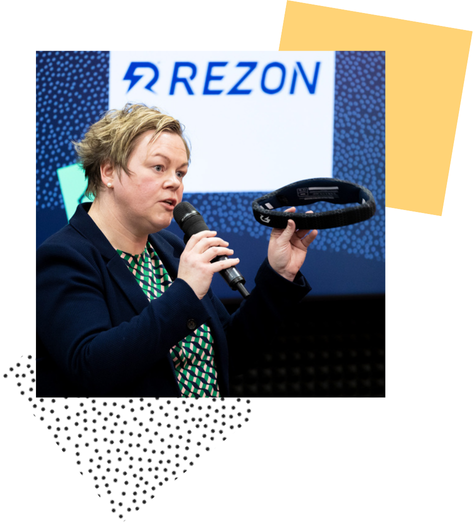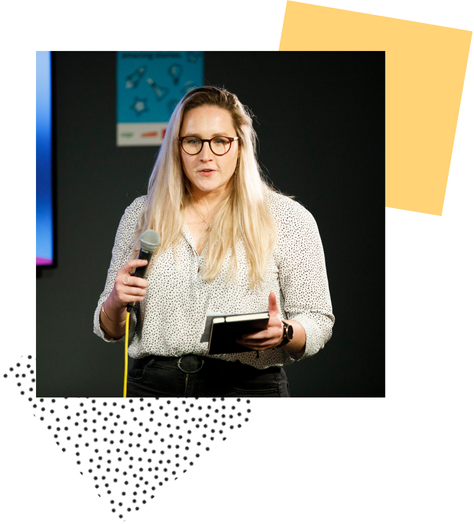We spoke to three industry experts to discuss how startups can open their pitches with a bang, demonstrate traction and get investors engaged.
Lucy-Rose Walker, Misadventures in Entrepreneuring

Keep it concise
“A pitch isn’t just about 140 carefully crafted words, it makes you question if you fully understand every detailed element of your business and if you can distil that detail into a single sentence. If it sounds like waffle, it probably is. That’s an indicator you need to go back and do some more work on that part of your business.
“Once you know the detail, you can use your pitch in many ways. You may not use it from start to finish, but once you have it, it’s like muscle memory and you can pull out what you need for the context of the situation. From starting a conversation, to concisely communicating your value, to sales, selling, and pitching for prizes. It’s a skill that you will never regret putting time and effort into.”
Stick to this structure
“If you can aim to cover the following in roughly a sentence or two you can’t go wrong;
- Hook your audience in,
- Describe your customer pain
- Describe your solution to that pain
- Describe the market & the competition
- Who is your team?
- What traction have you had to date
- What is your ask
It will depend on where you are in the stage of your company, whether you cover each section and in how much detail.”
Start off with a bang
“The best pitch introductions make me stop and think – they are memorable. They hook me in generally with something surprising, shocking, amusing or interactive. That could be by using a statistic, telling a personal fact or story, or a question designed to make the audience examine their own response. And they tend to become conversation starters that you would remember and reference later or tell others about. It doesn’t always have to be about theatrics, a confident statistic that makes you stand up and notice can be as good as any performance.”
Daniel Conti, co-founder of CommonRoom Ventures

Traction matters
“From my experience, traction will always remain the number one thing for me across any stage of business. If you get the traction, it’s a representation of the strength of the idea and management team.
“Just because you’re a founder and had an idea one morning, doesn’t mean you can’t be measured on traction. The traction is about how you have proven the idea works. You might have thought of the idea four days ago and have a business plan, a pitch deck and three meetings with suppliers. That’s all traction. It’s not tangible, but it’s the effort you’ve put in.”
Find end users
“End users are the next key traction point. If you can get several different end users to pilot test what you’re building, that’s great. If you’re developing it with constant feedback, you know it’s appropriate.
“There’s nothing better than being able to say to investors: here’s the idea, here are the end users that are testing it and they’ve already indicated that they’re willing to go live and pay X amount for it. All we need to do with the capital is get us to that stage.”
Use your limited budget to learn
“I want founders to show me that they already know this, this and this with their limited budget. If you’re spending £25 a day on Facebook, what was the conversion rate? What was your cost per lead? Was it effective?
“A founder should be able to say, ‘I did this with this budget and this was the learning I got. Now I need £1,000 to do it.’ It will be more targeted and based on experience.
“Startups pitching us hardly ever meet that level of proof. People don’t realise the importance of it either. They focus so much on the product and not on the marketing. That’s a mistake.
“From an investor’s point of view, it’s good to see that someone knows what they’re talking about, they’ve learnt from the experience and they’re going to apply that learning. I’ll fund it, because I have more belief.”
Jonathan Keeling, Partnerships Director at Crowdcube

Be precise
“With your pitch, give a precise but short overview of the product and the problem it solves. No one wants to hear a million and one solutions from a single product and that the market is worth billions. Why this product or service and what specifically does it solve? Why you and why now?
“For me, early-stage investment is about investing in credible people and teams. Getting across your track record and reassuring potential investors that you are the person to execute this idea is key.
“Don’t just reel off the hundreds of years of combined experience, investors have heard it all before. What specifically makes you and your team special?”
People invest in people
“People invest in people and humans love a great story! Investors have to buy into the proposition emotionally. Otherwise, they will see the investment simply as a number, rather than something that has to be a success for wider reasons beyond financial return.
“A brand’s story is also fundamental for customer acquisition, connection and long term value. Treat it with respect!”
Practice, practice, practice
“Don’t be afraid to practice your pitch with your family and friends, or pitch to yourself in the mirror. Not everyone can reel off the perfect pitch with no preparation or notes. Practice makes perfect and it’s important that you come across as polished with a solid understanding of your product or service.”
To learn more about how to structure your pitch and the questions investors are likely to ask, download our guide to creating a winning 90-second pitch.
Download your free pitching toolkit now
To learn about other key parts of your pitch and the questions investors are likely to ask, download our guide on how to create a winning 90-second pitch.
For this guide, we’ve talked to founders and investors about how to structure a 90-second pitch and the key elements that matter. There’s also information on how The Pitch scoring criteria works and questions you might get asked after your pitch.
Simply fill in the form below and we’ll send you straight to the PDF.
Download your free pitching toolkit
"*" indicates required fields




